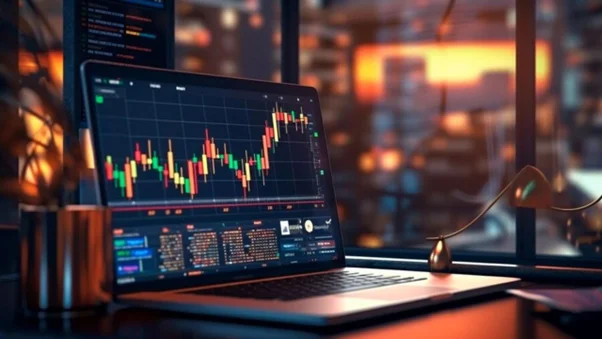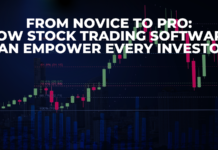The volatile nature of currency pairs combined with the high liquidity is definitely a major reason behind the popularity of forex trading. Forex traders make profits by moving with the market and anticipating the price movements in currency pairs. But, attaining trading success is not as easy as it sounds. A new trader will always be on a quest to find the best method for maximising their profits in the ever-changing forex market. However, limiting the possible losses should be your priority in the initial phase of your trading career.
The content blog can help you in this task as I am about to share 7 simple tips to minimise your risk as a forex trader and thereby minimise the potential losses.
- Trade With Lower Leverage
The ease with which you can avail leverage from forex brokers may convince you to use the highest level of leverage to boost your profits. But if your analysis and calculations go wrong, you will have to deal with huge losses. To control the risk exposure, you need to trade with a lower leverage as the amplified trade size does not guarantee profits unless you win the trade. If you lose the leveraged trades and the account drawdown exceeds the limit, there will be a margin call demanding a deposit.
The margin requirement is like collateral that the broker demands for letting you trade with borrowed funds. To find out the margin that you must have to keep your positions open, you can use a margin calculator. You just have to choose the currency pair, lot size and leverage ratio in a margin calculator and it will tell you the amount in your account base currency. Leverage can be a great tool to grow your account with a smaller amount of capital but you have to use it in limit or else it will be a disaster.
- Stop Loss Before You Lose
A trader who is not prepared to lose a trade will panic once they see the market becoming unfavourable. Feeling decision paralysis is not that rare when you see the price moving against your expectations in the middle of a trade. Some traders will exit the trade right away while others will wait longer as they think the trade will be saved if there is a reversal. Now, what can you do to avoid this dilemma? The solution is a simple tool called stop loss order.
There is no point in holding onto a losing trade if the market keeps moving in the opposite direction as it only results in bigger losses. You can prevent this mistake by specifying the price at which you want to exit the trade when it goes into a loss. This is done by placing a stop loss order which automatically closes a losing trade once the SL price is reached. By placing a stop loss in every trade, you can minimise the risk and potential losses.
- Plan Your Trade Exits
You have already learned to exit a losing trade at the right time by placing a stop loss. But you should also plan your trade exits for a winning trade in advance. Sometimes, you close a winning trade too early, losing the potential profits or you don’t exit it at the peak price which again leads to less profits. In the worst-case scenario, your winning trade may turn into a losing trade. To avoid this, place a take profit order to automatically exit the position at the best price, locking your profit.
To calculate the potential profit of a trade, you can use tools like forex trading calculators that instantly give accurate values for any trade-related metrics that you want to find. You just have to enter the required details into the automated calculator and this way, you can save a lot of time and effort. Using such tools enhances your trading skills as you can make informed trading decisions and plan your trades based on the result you expect in the end.
- Diversify
Another tip to minimise your risk in forex trading is to diversify by trading with different currency pairs after considering their correlation. Currency correlation has to be studied to pick the most suitable pairs that can offset the risk. Suppose, you open a long position with 2 pairs that have a strong positive correlation and the price starts falling. In this case, you will be losing both trades as positively correlated pairs tend to move in the same direction.
Hence, you should be careful with the trading instruments that you add to your portfolio. You can also trade other asset classes outside of forex to reduce the risk further. The simple theory of diversification is to not put all your eggs in a single basket as you will encounter huge losses if anything happens to that basket. So, make sure, you don’t risk all your funds for a single currency pair in forex.
- Follow Your Own Rules
There is no rule of thumb to be followed for forex trading and you are free to choose the best course of action based on your own trading goals. But you must be setting some personal trading rules to make the trading process easier and more efficient. When you have a rule-based trading system in place, you are less likely to make mistakes like emotional trading. An example of a personal trading rule is setting an optimal risk/reward ratio along with limiting the risk per trade to 1% or 2%. You should also decide the maximum number of trades that you can open.
- Money Management
Money management is very important to minimise your risk as a forex trader. You should be careful about how much money you risk for trading and how you use the profits that are earned in the end. Whether it is about adding more funds to your account or withdrawals, you should be diligent. One tool that can come in handy for managing your trading capital well is a currency calculator that converts an amount from one currency to another by applying real-time exchange rates. This is perfect for managing your finances while trading with different currency pairs.
- Assess Your Risk Tolerance
Different traders have different levels of risk tolerance as some are comfortable with taking higher risk for a bigger profit but others like to keep it balanced without taking excess risk. So, you should understand your own risk appetite and limit the exposure to market risk based on your preferences. Being risk-averse can limit your growth as a trader but taking excess risk puts you in a dangerous position as well. So, you need to stay in the middle and make all your trading decisions after considering the risk that is involved and the rewards that you can earn by taking the risk.
Conclusion
In a nutshell, being a successful trader is not just about how much profit you can make but also about how much risk you can take for the sake of profits. So, spend enough time to understand the risks that you will have to deal with as a forex trader and prepare well.






















